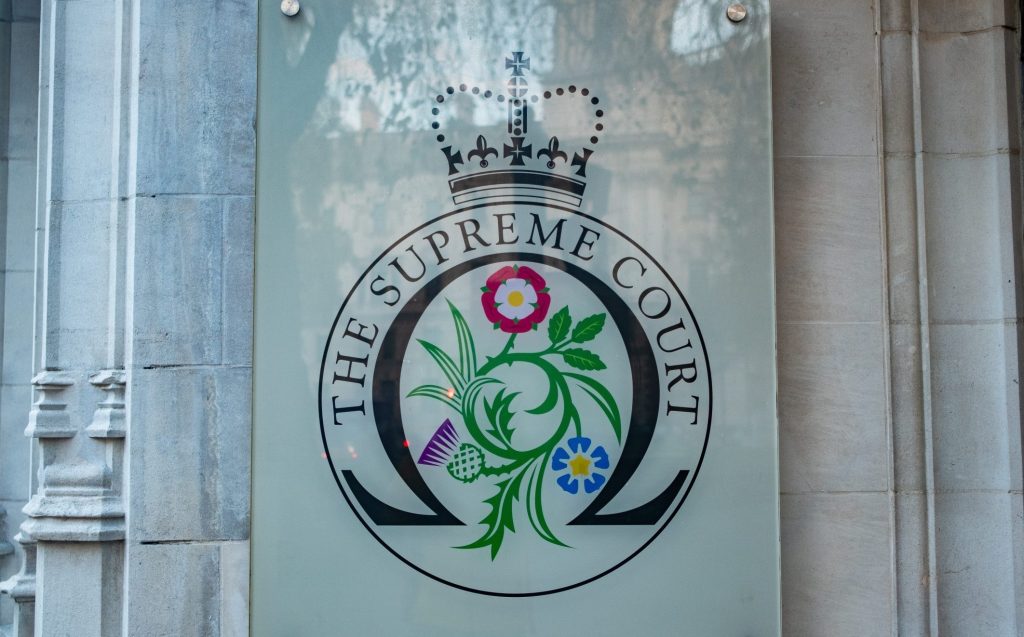Potanin v Potanina: The Supreme Court Decision
On 31 January 2024 the Supreme Court handed down the much-awaited judgment in Potanin v Potanina [1]. These proceedings relate to financial claims which can be brought in England for financial provision after an overseas divorce. Although the parties in this case have been described as “massively rich” with assets estimated at $20 billion, the judgment will have a significant impact on the way all Part III claims are determined – both in terms of procedure and outcome – going forwards in England.
This is only the second time the Supreme Court has had an opportunity to give a substantive judgment on the way in which Part III proceedings should be conducted (the other case being Agbaje [2] in 2010). This judgment is likely to be of particular importance given the announcement that despite calls for the Law Commission to review the law on Part III applications, they are not going to be included in their review of financial provision on divorce in respect of which a scoping paper is expected to be published in September 2024 [3].
Part III: A Brief Introduction
Part III of the Matrimonial and Family Proceedings Act 1984 (“Part III”) gives the English family court the power to make financial orders after a marriage has been dissolved or annulled in an overseas country if there has been inadequate financial provision on the overseas divorce and the parties have a sufficient connection with England.
Part III was introduced at a time when international movement was on the rise and many countries made little, if any, financial provision for women on divorce. The problem became apparent in a series of cases in the 1970s where there had been a foreign divorce which resulted in no financial provision having been made for the wife.
For public policy reasons the English family court has a liberal approach to the recognition of overseas divorces. This did however give rise to difficulties when parties with close connections to England divorce abroad and received inadequate financial provision. If England recognised the overseas divorced (which it usually does), the English family court had no power to make orders for financial relief.
The Law Commission was asked to review the law in this area and make recommendations. This resulted in a Working Paper in 1980 [4] followed by their final Report in 1982 [5]. The Law Commission recommended the introduction of legislation to give the English court the power to make financial orders after an overseas divorce where there had been inadequate financial provision abroad and thus Part III was born.
To avoid claims without any merit from proceedings the Law Commission recommended a filter mechanism. Therefore, before an application can be brought for financial relief under Part III the applicant must first apply for and obtain “leave” under section 13 of the 1984 Act. The legislation provides that leave should not be granted unless there is a “substantial ground” although case law has established that the threshold is not high.
As with any claim it is also necessary to have a sufficient connection, jurisdiction, with England to bring make an application under Part III. The jurisdictional grounds are set out in section 15 of the 1984 Act and require, in summary, either party to be domiciled in England or have been habitually resident in England for 12 months on the date of the overseas divorce or Part III leave application [6].
The English court has the power to make a wide range of orders that are very similar to the financial orders which can be made on divorce in England. The range of orders is contained within section 17 of the 1984 Act and includes lump sum orders, property transfer orders, periodical payments orders and pension sharing orders.
When considering both whether to make an order the English court is under a duty to consider a list of factors in section 16 of the 1984 Act when deciding whether England is an appropriate venue and a list of factors in section 18 of the 1984 Act in deciding whether, and if so in what manner, to make an order under Part III.
Part III: The Leave Process
The procedure to be adopted when applying for leave under Part III has a complicated history. Although the Law Commission recommended that the leave application should be ex parte, the legislation made no reference to whether the leave hearing should be inter partes or ex parte and the procedural rules (which have changed over time) have not always been clear.
As a result a practice developed where applicants would often give respondents informal notice of the leave application. This invariably lead to the leave application being determined on notice. Alternatively when the leave application was determined ex parte respondents would often apply for the grant of leave to be set aside. Both approaches lead to increased time and cost being spent on what was supposed to be a summary process to prevent wholly unmeritorious claims being pursued.
These practices were perceived to have been disapproved in Traversa v Freddie [7] and Agbaje [8]. In the former the Court of Appeal held that the leave application should be made without notice albeit the court should have the power to direct that the leave application be heard inter partes [9]. The procedural rules were amended to reflect this in August 2017 [10]. In Agbaje the Supreme Court held that unless the respondent can deliver a ‘knock out blow’, any set aside application should be heard with the substantive application [11].
The more recent practice over the last decade or so has therefore been for applicants to make the leave application without notice although there has been an increasing recognition – particularly following the difficulties which arose in the Potanin litigation – that in complex or borderline cases the court may consider that the leave application should be heard on notice [12].
Although respondents still have the ability to apply for Part III leave to be set aside if made at an ex parte hearing, the threshold the Supreme Court introduced in Agbaje (a knock-out blow) is so high that in practice it is very unusual for leave to be set aside once it has been granted. The court will more often direct that any set aside application should be determined at the conclusion of the proceedings once all the evidence has been heard.
This approach has been perceived by some as unfair on respondents. Although there is a high duty of candour on applicants at an ex parte hearing, that is not the same as the respondent being able to make their own submissions on the merits. This perceived unfairness has arguably become more acute following the Court of Appeal’s comments in Potanin that where leave is obtained based on misleading information it should only be set aside if the misrepresentation was material [13].
This combination of
- leave often being granted ex parte and
- the very high threshold to succeed on a set aside application, have led to concerns that respondents are unable to be heard on the issue of whether leave should be granted. They are often not present at the leave hearing and unless they can show a knock-out blow are unable to be heard after leave has been granted.
It was against this background that the Potanin litigation started in England in late 2018 when the wife applied ex parte for leave to make a financial claim in England following her Russian divorce.
Potanin: Brief Background
The parties are both Russian. They married in Russia in 1983 and divorced in Russia in February 2014. They had three children who are all now adults. The parties spent all their married life living in Russia.
The parties came from modest backgrounds but during the marriage the husband accumulated wealth estimated to be in the region of approximately $20 billion. The majority of the husband’s wealth was not held in the husband’s name but through various trusts and corporate vehicles.
There was a dispute between the parties as to the date of separation (2007 per the husband; 2013 per the wife) although the Russian courts found the date of separation to be 2007. In 2007 the husband transferred the sum of $71 million to the wife followed by a further $5.1 million.
After what was described as a ‘”blizzard of litigation” between 2014 and 2018 the Russian courts awarded the wife at least $41.5 million (there is a dispute as to the exact amount received owing to disagreement as to the appropriate exchange rate to be used when converting roubles into dollars).
In terms of connections with England, in June 2014 (four months after the Russian divorce was finalised) the wife obtained a UK investor visa. Later that year the wife bought a property in London. The wife’s case was that since the beginning of 2017 London had been her permanent home.
Potanin: The Part III Leave Application
In October 2018 the wife made a without notice application for leave to bring a claim under Part III of the MFPA 1984. On 25 January 2019 Mr Justice Cohen granted the wife leave to apply for financial relief pursuant to Part III. Although the judge expressed a strong inclination during the without notice leave hearing to determine the application on notice, the judge determined the leave application ex parte.
Potanin: The Set Aside Application
The husband applied to set aside the grant of leave on the basis the judge had been mislead as to the facts of the case, issues of Russian law and the applicable principles of English law. The set aside hearing took place inter partes over two days in October 2019 with judgment given on 8 November 2019 [14].
When deciding to set aside the grant of leave Cohen J found three categories of misrepresentation:
- Factual misrepresentation which the judge said included being given incorrect information about the level of child maintenance and misleading information as to the strength of the connections with England;
- Misrepresentation as to the Russian litigation which the judge said included not being given copies of the Russian law or judgments and not being told the wife had not made a needs-based claim in the Russian proceedings; and
- Misrepresentation as to English law which the judge said included not being sufficiently referred to key paragraphs of the Supreme Court’s decision in Agbaje.
Potanin: The Court of Appeal Judgment
The wife applied for permission to appeal the judge’s decision to set aside the grant of leave. The appeal hearing took place over two days in January 2021 with judgment handed down on 13 May 2021[15]. The Court of Appeal (Lady Justice King delivering the judgment with which Lord Justice David Richards and Lord Justice Moylan agreed) allowed the wife’s appeal and allowed the wife’s Part III application to proceed.
The Court of Appeal found that the judge had applied the wrong test and adopted the wrong procedure when setting aside the grant of leave. The test the judge adopted was whether – if he had had the full picture at the leave application – he would have granted the wife leave to bring her application. The Court of Appeal said that the judge should have instead listed a short hearing to determine whether there was a knock-out blow.
The Court of Appeal held that the judge’s view had been tainted by the procedure adopted at the set aside hearing (which on the one hand was too lengthy, but on the other hand led to the making of findings against the wife without oral or expert evidence) and that the alleged deficits identified by the judge, even if they were to be established, were not sufficiently material to justify setting aside the grant of permission.
The Court of Appeal’s order therefore reinstated the grant of leave and the matter was remitted to Mr Justice Francis for directions to be made to progress the wife’s claim under Part II.
Potanin: The Supreme Court Judgment
The husband appealed to the Supreme Court. The hearing took place over 1.5 days on 31 October and 1 November 2023. The judgment was handed down on 31 January 2024. By a majority of 3:2 the Supreme Court allowed the husband’s appeal.
Practitioners should be aware of the following two areas covered by Lord Leggatt in his judgment on behalf of the majority: (1) the threshold adopted on the Part III leave application and (2) the threshold adopted on an application to set aside the grant of Part III leave.
Threshold on the leave application
In an extremely thorough and detailed judgment Lord Leggatt examines the inconsistency in the threshold test adopted by the Supreme Court in Agbaje on the leave application which was as follows:
“The principal object of the filter mechanism [in section 13] is to prevent wholly unmeritorious claims being pursued to oppress or blackmail a former spouse. The threshold is not high, but is higher than ‘serious issue to be tried’ or ‘good arguable case’ found in other contexts. It is perhaps best expressed by saying that in this context ‘substantial’ means ‘solid’.” [16]
In a passage which should be read by all practitioners Lord Leggatt then gives the following guidance on the threshold to be adopted on leave applications:
“I would not wish to cast any doubt on the primary guidance given in Agbaje that in the context of section 13 the word “substantial” means “solid”. Nor would I suggest that courts which have applied the test as stated by Lord Collins have applied the law incorrectly. But I think that some clarification is called for of what was said in the first two sentences of the passage quoted at para 86 above. It should be made clear that the threshold is higher than merely satisfying the court that the claim is not totally without merit or abusive. It does not seem to me necessary, or advantageous, to further explain the test by comparing it with tests applied in other procedural contexts. If any such comparison is to be made, however, as it was by Lord Collins, the closest analogy seems to me to be with other contexts in which a court has to decide whether a claim should be allowed to proceed to a full hearing or should be dismissed summarily. In ordinary civil proceedings such a question arises when an application is made for summary judgment against a claimant; or to set aside a judgment entered in default; or (as mentioned above) in deciding whether a claim is of sufficient merit that the court should permit service of the proceedings on a foreign defendant. In each of these contexts the test applied is whether the claim has a “real prospect of success”. That is also in substance the test which the court applies in deciding whether to give permission for a claim for judicial review to proceed to a full hearing” [17].
Lord Leggatt also commented that leave hearings listed for as little between 20 and 60 minutes are not realistic and that it would not be reasonable to expect such hearings to be measured in minutes rather than hours [18].
Going forwards practitioners should be aware that the test adopted on the Part III leave application is now likely to be higher than previously. Applicants applying for leave under Part III will need to show more than that their claim is not totalling without merit or an abuse of process. The test to be adopted going forwards is whether the claim has a real prospect of success. Practitioners should also be aware when making their application that a longer time estimate may be required (particularly given, as we will see below, it is possible that Part III leave applications will more often be heard on notice going forwards).
Threshold on an application to set-aside leave
In the opening paragraph of his judgement Lord Leggatt held as follows:
“Rule one for any judge dealing with a case is that, before you make an order requested by one party, you must give the other party a chance to object. Sometimes a decision needs to be made before it is practicable to do this. Then you must do the next best thing, which is – if you make the order sought – to give the other party an opportunity to argue that the order should be set aside or varied. What is always unfair is to make a final order, only capable of correction on appeal, after hearing only from the party who wants you to make the order without allowing the other party to say why the order should not be made. [19]”
Lord Leggatt went on to give three reasons why the approach which has been adopted to the Part III leave process was unfair:
- To deny a party adversely affected by an order any opportunity to say why the order should not be made is unfair [20]
- As well as being unfair, such a procedure is also foolish: judges make better decisions if they hear argument from both sides rather than from one side only [21]; and
- A procedure which, while otherwise preventing a party from objecting to an order, allows that party to do so if he can show that the court was materially misled at a hearing held in his absence is likely to raise the temperature, increase court time and waste costs [22].
Lord Leggatt goes on to state that the law as it presently stands (not how it had been misinterpreted) does not lead to those untoward results [23]. The right to apply for the grant of leave to be set aside is unconditional and the rules do not require a knock-out blow [24]. Lord Leggatt goes on to explain that the creation of the “knock-out blow” test was owing to a misunderstanding as to concerns Thorpe LJ and Munby J expressed in Jordan and Agbaje respectively. According to Lord Leggatt, those judges had been criticising as inefficient the requirement to hear the leave application initially ex parte instead of being able to move at once to an inter partes hearing to decide whether to grant leave. [25]
Lord Leggatt goes on to conclude that “whatever the reason for it, however, it would be quite wrong and unfair if a judge’s initial case management decision were to deprive the respondent of the right to present an argument to the court that leave should not be granted [26]” and that “the end result of this history is that there is a mismatch between, on the one hand, the fundamental principle of procedural fairness reflected in [the rules] which entitles a respondent to apply to set aside an order made without notice and, on the other hand, the practice presently adopted in dealing with section 13 applications [27]”.
Lord Leggatt then goes on to consider, and dismiss, three reasons which were advanced for retaining the knock-out blow:
- Restricting the right to apply to set aside leave granted without notice is justified by the desirability of saving costs and court time. Lord Leggatt’s response was that although court time could be saved if courts were to adopt a practice of hearing from applicants alone without allowing respondents to participate in the process unless they can demonstrate by a “knock-out blow”, fairness is not a value which can properly be sacrificed in the interests of efficiency [28];
- Denying a respondent a right to object to an application for leave under section 13 is not unfair because granting leave does not decide any issue of substance. In response Lord Leggatt commented that although a requirement to obtain leave of the court to bring a claim is unusual, that does not mean it is unimportant and the fact a grant of leave does not finally decide any issue of substance between the parties is not an acceptable reason to deny a respondent the right to be heard [29]; and
- The approach generally taken by the Supreme Court is that matters of practice and procedure are best left to the Court of Appeal or the Rules Committee to address. In response Lord Leggatt responded that although that is the general approach, there are three reasons why it is not applicable in this case:
- (a) the practice of denying respondents the right to oppose applications for leave under section 13 originates in observations in a judgment of the Supreme Court (and it is therefore for the Supreme Court to correct the position)
- (b) no question of procedure is raised which it is suitable to leave for consideration by the Rules Committee (as in their current form the rules of court governing the setting aside of leave granted without notice are clear and unambiguous) and
- (c) as the practice currently being followed in dealing with applications to set aside leave granted without notice is unlawful the Supreme Court should intervene to end the practice [30].
This represents a significant change of practice when dealing with Part III leave applications. Since 2010 practitioners have been slow to advise respondents to set aside the grant of leave owing to the very high threshold and costs risks. Sometimes a tactical decision was taken to issue a set aside application for presentation purposes on the basis it would be listed for determination at the final hearing. But apart from that set aside applications have been rare over the last decade or so.
Going forwards the test to be adopted on set aside applications is now lower. The obvious concern is that we will see a return to the practice before Agbaje and Traversa v Freddie of respondents routinely applying to set aside the grant of Part III leave. To counter this I would not be surprised if the courts increasingly utilise their case management powers to hear Part III leave applications on notice with a time estimate of two hours or half a day. Where the application is determined ex parte applicants will need to be very careful to comply with the duty of candour which exists on all ex parte applications.
How the proceedings for the parties in the Potanin litigation resolves remains to be seen. The Supreme Court have remitted two grounds of appeal (which were not argued before the Supreme Court) to the Court of Appeal. I suspect, sadly, the litigation which started in Russia a decade ago is still some way from reaching a conclusion.
First Published in the Financial Remedies Journal – Blog
Notes
[1] [2024] UKSC 3
[2] [2010] UKSC 13
[3] Terms of Reference – Financial Remedies on Divorce and Dissolution (para 1.13(4))
[4] Financial Relief After Foreign Divorce (180) (Working Paper No. 77)
[5] Financial Relief After Foreign Divorce (1982) (Law Comm No. 117)
[6] Jurisdiction can also be founded on the basis either party has a beneficial interest in a property in England which has been used as a family home, although financial claims are limited.
[7] [2011] EWCA Civ 81
[8] [2010] UKSC 13
[9] Para 57
[10] r.8.25 FPR 2010
[11] Para 33
[12] See, for example, para 25(d) of the President’s Guidance on the Jurisdiction of the Family Court dated 24 May 2021
[13] [2021] EWCA Civ 702, para 87
14] [2019] EWHC 2956 (Fam)
[15] [2021] EWCA Civ 702
[16] Para 33
[17] Para 89
[18] Para 93
[19] Para 1
[20] Para 31
[21] Para 32
[22] Para 33
[23] Para 34
[24] Para 35
[25] Para 56
[26] Para 67
[27] Para 68
[28] Para 77-78
[29] Para 79-81
[30] Para 82-85
Michael Allum
[email protected]
The International Family Law Group LLP
www.iflg.uk.com
©January 2024
- Michael Allumhttps://iflg.uk.com/team/michael-allum
- Michael Allumhttps://iflg.uk.com/team/michael-allum
- Michael Allumhttps://iflg.uk.com/team/michael-allum
- Michael Allumhttps://iflg.uk.com/team/michael-allum











